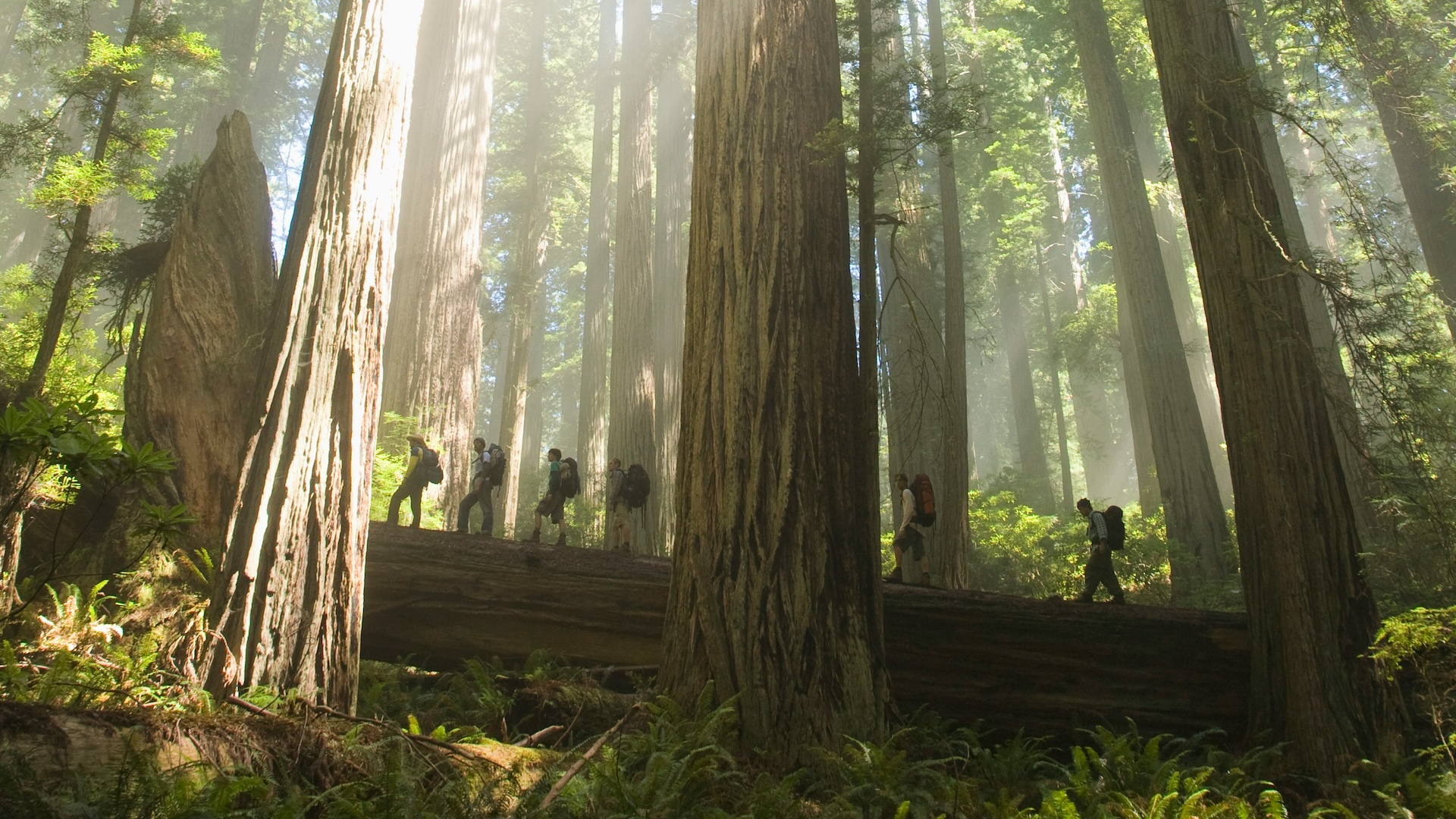A recent speaking trip took me to the American West Coast. The church there asked Aileen to accompany me and to arrive a couple of days early. Kindly, they wanted to give us time and opportunity to venture to the coast and, along the way, spend some time in the redwood forests of Northern California.
Truly, the redwoods were a sight to behold. Though I brought a camera, I found no spot and no angle that could come close to capturing their magnificence. There is something wondrous about gazing at a tree that reaches 20 feet across and towers 350 feet into the sky. There is something humbling about pondering a tree that has stood for centuries or possibly even millennia. Some of these trees predate the founding of America, the printing press, the Middle Ages, and possibly even the life of Jesus Christ. We can’t help but feel low and small by comparison.
As the day continued and we drove toward the coast, I found myself wondering how redwoods can stand for so long. They tend to grow in low-lying areas that are prone to floods, so how do they keep from being swept away? They stand above every other tree, so how do they withstand the coastal winds that blow in from the ocean and the mountain winds that blow out from the land? I assumed the answer must be that their roots grow extraordinarily far into the ground, that they brace themselves by pressing deep into soil and rock.
But I learned I was wrong. Redwoods actually have remarkably shallow root systems that extend no more than 6 to 12 feet beneath the surface. Instead of depending on depth, they depend on breadth. The roots extend far outward and as they grow, the roots of one tree will twist and wrap around many others until they have formed an entire system that is nearly impossible to topple from above or uproot from beneath. Redwoods are found in groves because they depend upon one another for their growth, their help, and their survival. A lone redwood is soon likely to be a dead redwood, or if not that, a dwarf redwood that never reaches its full potential.
After a couple of days of sightseeing we began a conference and through the weekend had many questions about Christian leaders who fall. And I expressed that just as the winds blow hardest against the tallest trees, so temptations may press hardest against the leaders who rise the highest. Just as floods press against shallow roots, so seductive desires rise up against those whose fall would bring the greatest reproach upon the gospel. In this way, people are much like redwoods, dependent upon others and reliant on their support.
Yet sadly, so many Christian leaders come to believe they have advanced beyond the need for true Christian community. Their fame leads them to believe they have transcended their own local church or perhaps even any local church. Before long, their lives are no longer intertwined with the lives of others who will stabilize them, support them, and provide accountability. When the winds blow hard as they inevitably do, and when floods rise strong as they assuredly must, these people totter and fall. And great is their ruin.










